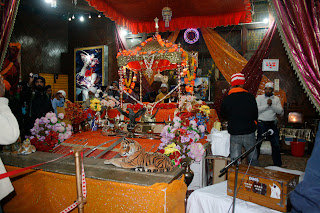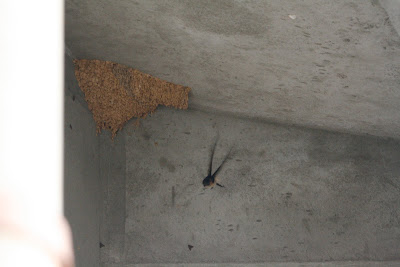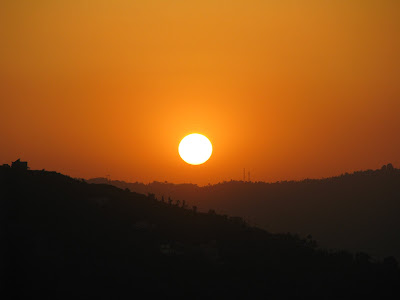
When I told my family and friends that I wanted to trek to Valley of Flowers and Hemkund Sahib this August, everyone thought I was just crazy. Besides Delhi, the rain gods had been relentless over Uttarakhand too causing road breaches at multiple sites in various hill towns. There were landslides everywhere and traffic to all the well known pilgrimage centres of Badri Nath, Kedar Nath, Gangotri and Yamunotri were getting cut off from rest of the country every now and then. The group I was trying to assemble had fallen through. But to do justice to the Valley of Flowers, one has to trek there in the month of August only when the entire valley is at its best bloom. So finally, I enquired at the Garhwal Mandal Vikas Nigam Ltd (www.gmvnl.com) if they had any vacancy for its weekly tour to Valley of Flowers – Hemkund Sahib – Badri Nath. Of course, they did not have any for the month of August. However, I was banking on some cancellations hoping some people might not like to venture on this trek in view of not a very comfortable situation of roads etc. I checked practically everyday with gmvn’s offices in Rishikesh, Dehradun and Delhi to enquire about the status of roads. Finally my luck struck gold; there were indeed some cancellations and Rishikesh office booked me and Rajesh for the group leaving from Rishikesh on the 25th August, and assured me that GMVN would look after our safety with utmost care.
Valley of flowers was another trek that I heard first from Motor Mama (see my post on Pindari trek for more on him). He had done it in 1970s, and had talked very often about it.
Day 1: we left Delhi in afternoon by Jan Shatabdi Express going to Dehradun, and got off at Haridwar, and took a bus to Rishikesh. From bus stand, the gmvn’s rest house, Bharat Bhumi, was not too far and there were many auto-rickshaws waiting to take us there.
Day 2: After a light breakfast we left Rishikesh by bus for our night halt at Joshimath, which normally one should cover in about 10 hours. But the sky was already overcast and one could not anticipate when a landslide or roadblock would greet us. Our group of 25 mostly had people above 50. Half of the group was of people above 65 years of age. It was nice to see old people venturing out for some adventure. Just two hours later, we hit our first of the roadblocks due to landslide. Mercifully, the staff of BRO (Border Roads Organization) was already at work with a bulldozer when it was still drizzling. It is to the credit of BRO that the roads in Himalayas remain travel worthy inspite of inclement weather; due to better communication facilities, the help arrives on time with efficient equipment. We passed through Devprayag which has confluence of Alaknanda (coming down from Badri Nath) and Bhagirathi (coming down from Gaumukh and Gangotri). These two sacred rivers join to form the mighty Ganga river; so it is from Devprayag only that river is called Ganga.
We also passed through Rudraprayag which has confluence of Alaknanda with Mandakini coming from Kedar Nath.

By evening we reached our third prayag of the day, Karanprayag which has confluence of Alaknanda with Pindar river, coming from Pindari glacier. The great warrior Karna of Mahabharat fame was supposed to have worshipped Sun god here to get the impregnable shield.
All the rivers which we saw were swollen with huge flow of water. By this time we had hit a number of roadblocks, but were fortunate not to have been delayed for too long. We reached Joshimath at about 9 pm and were lodged in the gmvn guest house in the main bazaar. It was poorly maintained and bed linen was damp and dirty. We made noise but could not do much.
3Day: We left Joshimath (I was happy leaving this guest house) early in the morning soon after our cup of tea to reach Govind Ghat from where we were to start our trek to Gangharia. It looked like a small town developed on both side of a narrow road on either side of which there were shops selling religious artifacts with equal number of small eating houses. Govind Ghat, as the name suggests, is surrounded on all sides by hills; it has a Gurudwara which has plenty of accommodation for pilgrims on their way to Shri Hemkund Sahib. We did not stay here for long, and as soon as we could hire a porter to carry our bags, we started on our trek. There were too many porters and far too many ponywallahs. Since tourists were less than expected this time owing to news of incessant rains splashed over all print and electronic media, we were pestered all the way by these pony-owners. Traditionally, all the pony-owners are local Garhwalis, while porters come from Nepal. These porters are reliable and sturdier.

The landscape was quite scenic with hills all around and river Bhyundar gushing down noisily hitting boulders all along its course. Because of cloud cover, we could not see snow clad peaks.

There were far too many eating places with ubiquitous paranthas, maggi, packaged snacks. There were shops for fresh fruit juice as well as for dry fruits too. The ponies had killed the joy of a leisurely trek; one had to make room for them to pass by, the entire stretch was littered with their solid waste; mercifully, the rains were washing it away too, but at many places it had created slush making that stretch stink. I reached Gangharia after 6 hrs of trek covering 14 km, and had come to an altitude of 3048 m (10,000 ft). To cater to the ever increasing number of pilgrims to Hemkund Sahib and trekkers to the Valley of Flowers, this ‘once upon a time a tiny high altitude village’ has developed into a noisy, thriving market place with dhabas and guest houses everywhere. There is a gurdwara, Gobind Dham, which gives to shelter to pilgrims on their way to Hemkund Sahib; langar and hot tea is available throughout the day. Since no traveler is allowed to stay overnight at either Valley of Flowers or Hemkund Sahib, everyone has to stay here in transit. Gangharia does not have a resident population; the whole area comes to life during 4-month period when visitors start pouring in during June to September.
Day 4: We were to trek to the Valley of Flowers, 3352–3658 m (11060-12070 ft). Its entry is ticketed and, mercifully, not open to ponies. We trekked 4 km uphill through a forest to reach an open expanse of valley. One could trek for another 3 km. From the beginning of forest, flowers of all colour and hue were scattered here and there – what a beautiful treat.



The birch trees were in abundance; at this height that is one of the trees that thrives. The beauty of Valley of Flowers can only be appreciated by visiting it. It is said that nearly 80 varieties of flowers are found here. There are many kinds of birds, and this area is home to brown bear, black bear, snow leopard, and blue sheep (bharel). Since inside the forest and valley area, no eating places are allowed, we had carried packed lunch for ourselves. It was a bright sunny day, and having aloo-paratha in the Sun, surrounded by flowering shrubs in the backdrop of Gauri parbat was heavenly. The whole area is much sought after by botanists, photographers and nature lovers. Some of the well known flowers are Brahm-kamal, blue poppy, cobra lily, anemones, geranium, delphinium, bell flowers, etc. The rhododendron flowering season was already over in August.
Day 5: I woke up early in the morning with some trepidation. We were to trek uphill for 7 km and attain an altitude of 4329 m (nearly 14,500 ft; some estimate its height to be more than 15,000 ft). It was overcast and had started drizzling. No high altitude peaks were visible. We started our upward journey with loud cries of ‘jo bole so nihaal, Sat Sri Akal’. The trek to the Gurudwara is steep all the way, with no flat section. I managed 4 km not with much difficulty; there were pilgrims of all ages; a few young couple were walking carrying their tiny tots in their arms. After 4 km, progress became a bit difficult, I had to stop after every few steps to catch my breath. People coming down would encourage by saying it was not too far any longer; offerings of biscuits, candy, and even glucose, and constant chant of ‘Wahe Guru’ kept me going. When the shrine was just one km away, some outer structure became visible. I got a fresh lease of life; how easily I covered that last kilometer, I could not have imagined a little while ago. I was just in time for the ‘Ardas’ beginning at 12 noon. I decided to have dip at the holy sarovar; the water was icy cold, but I did not waste time, I just went in and quickly immersed myself in the water, and before my head could become numb, I was out in a jiffy. I could persuade Rajesh and another fellow traveler to do the same. After having had dips in some high altitude lakes, including Manasarovar, I had figured out that the key to having a dip here was speed: just go in, immerse yourself completely and immediately and come out, before the body gets a chance to be affected by extremely low temperatures; don’t wait for body to get acclimatized, since it won’t ever. After Ardas, I went around; there is a ‘Lakshman temple also here, it needs maintenance and renovation. Around the glacier lake, ‘Brahm-kamal’ was flowering in abundance. The lake is supposed to be surrounded by 7 Himalayan peaks, but none was visible due to cloud cover.


The Hemkund Sahib Gurudwara is the highest Gurudwara in the world. Its history makes an interesting read and is available in many books and websites. Its location was rediscovered only in 1932, and the structure was built subsequently.
Day 6: We started our march downhill. It had been raining since early morning. The progress was slow, however, midway the rain stopped and bright sunshine was most welcome. Bus was waiting for us to take us to Badri Nath shrine where we were to spend one night. The GMVN guest house at Badri Nath was a welcome change after our stay in dirty lodging at Gangharia. We came across two more confluences, Nandprayag (Alaknanda joined by Nandakini coming from Nanda Devi, and Vishnuprayag (Alaknanda joined by Dhauli Ganga coming from Niti pass). At Badri Nath, besides having a darshan at the shrine, we went to the last Indian village, Mana, on this side of Himalaya. It was all very nostalgic, since I had spent some very good time here in 2007 for my induction training for Antarctica expedition.
Day 7: We turned back towards Delhi now, and stayed at Peepal Koti.
Day 8: We reached Rishikesh on time, and left by bus for Hardwar from where we were to board our train for Delhi.

Inspite of all the torrential rains, landslides at multiple sites, and many road blocks, we managed this trek well on time and without any hazard. Gods had been very kind. It is a common knowledge that the Himalayas, 20 million years old, is still the youngest mountain; is still growing, and is geologically active. Since it consists of sedimentary and metamorphic rocks, it is porous and very light and prone to landslides. In the Indian Himalayas, the situation has been made worse by indiscriminate deforestation. I have been to Himalayas many times, but never saw how ‘kachcha’ these mountains are. This season, the upper layer of the mountains has just been washed away, and what you see is just loose rocks, boulders, and soil. It was quite scary, more than the swollen rivers or landslides. If we do not do something seriously with honesty and sincerity, we shall stand doomed.










